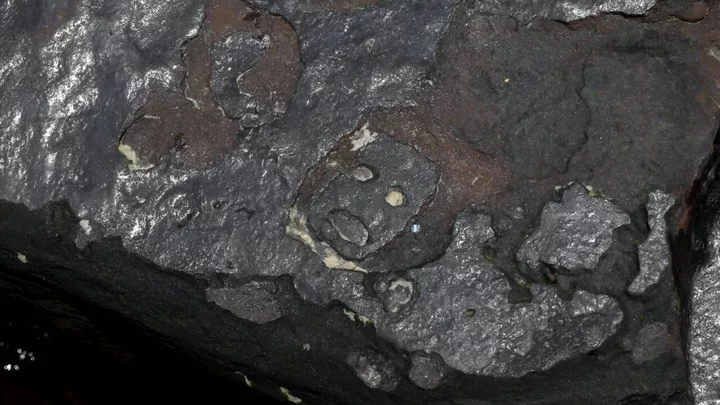The discovery of beautiful, ancient rock engravings has been a bitter-sweet experience for experts in Brazil’s Amazon.
On the one hand, the carvings offer an exciting insight into the first people who inhabited the region.
On the other, it is a worrying signal that the Negro River, which runs through the region, may soon cease to exist.
An extreme drought in parts of the rainforest has led to a dramatic drop in river water levels – with the Negro’s flow reaching its lowest level for 121 years last week.
The drop exposed dozens of normally submerged rock formations featuring carvings of human forms that may date back some 2,000 years.
Livia Ribeiro, a longtime resident of the Amazon's largest city, Manaus, said she heard about the rock engravings from friends and wanted to check them out.
"I thought it was a lie,” she told the AFP news agency. “I had never seen this and I've lived in Manaus for 27 years.”
She admitted that whilst scientists and members of the public were delighted at the discovery, they acknowledged that it also raised unsettling questions.
"We come, we look at (the engravings) and we think they are beautiful. But at the same time, it is worrying,” she said.
“I also think about whether this river will exist in 50 or 100 years.”
Drought in Brazil's Amazon has drastically reduced river levels in recent weeks, affecting a region that depends on a labrynth of waterways for transportation and supplies.
The Brazilian government has sent emergency aid to the area, where normally bustling riverbanks are dry and littered with stranded boats.
According to experts, the dry season has worsened this year due to El Niño, an irregular climate pattern over the Pacific Ocean that disrupts normal weather, adding to the effect of climate change.
Jaime Oliveira, of the Brazilian Institute of Historical Heritage (Iphan), said the engravings comprise an archaeological site of "great relevance”.
They are located at a site known as Praia das Lajes and were first seen in 2010, during another period of drought (which was not as severe as the current one).
Most of the engravings are of human faces, some of them rectangular and others oval, with smiles or grim expressions.
"The site expresses emotions, feelings, it is an engraved rock record, but it has something in common with current works of art," Oliveira said.
For Beatriz Carneiro, historian and member of Iphan, Praia das Lajes has an "inestimable" value in understanding the first people who inhabited the region, a field still little explored.
"Unhappily it is now reappearing with the worsening of the drought," she said.
"Having our rivers back (flooded) and keeping the engravings submerged will help preserve them, even more than our work."
Sign up for our free Indy100 weekly newsletter
Have your say in our news democracy. Click the upvote icon at the top of the page to help raise this article through the indy100 rankings









